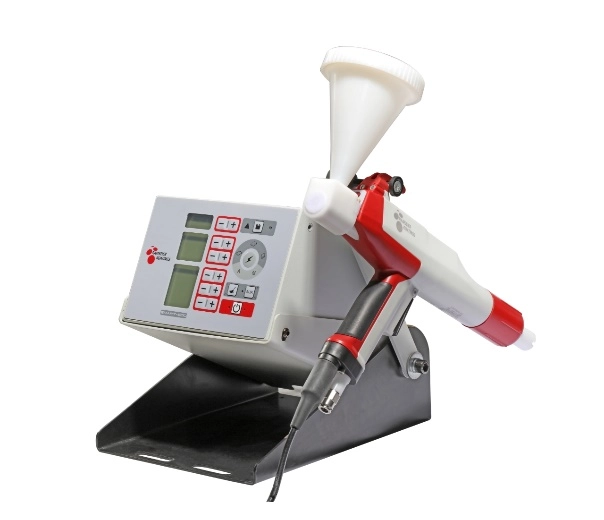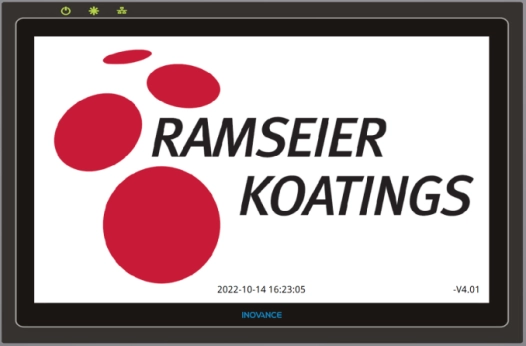Content Menu
● Understanding Powder Coating Plants and Their Energy Use
>> What Is a Powder Coating Plant?
>> Energy Consumption Drivers in Powder Coating
● What Are Smart Data Management Systems?
>> Definition and Components
>> Role in Industrial Energy Management
● Implementing Smart Data Management in Powder Coating Plants
>> Step 1: Installation of IoT Sensors and Data Acquisition Hardware
>> Step 2: Data Integration and Real-Time Monitoring
>> Step 3: Data Analytics and Insights Generation
>> Step 4: Automated Control and Optimization
● Key Benefits of Smart Data Management Systems on Energy Optimization
>> Reduction in Energy Waste and Cost Savings
>> Improved Process Stability and Product Quality
>> Enhanced Equipment Life and Maintenance Efficiency
>> Data-Driven Decision Making
● Practical Examples of Energy Optimization in Powder Coating Plants
>> Dynamic Oven Temperature Control
>> Variable-Speed Fan Control in Spray Booths
>> Energy Load Balancing Across Equipment
● Challenges in Adopting Smart Data Management Systems
>> Initial Investment and Integration Complexity
>> Data Security and Privacy Concerns
>> Resistance to Change and Workforce Training
● The Future of Energy Optimization in Powder Coating Plants
>> Advances in AI and Machine Learning
>> Integration with Renewable Energy Sources
>> Digital Twins for Simulation and Planning
● Conclusion
● Frequently Asked Questions
Powder coating plants are critical components in various manufacturing sectors, providing durable and environmentally friendly finishes on metal parts. However, these facilities tend to consume significant amounts of energy due to the heating processes, curing ovens, and auxiliary systems involved. With the growing emphasis on sustainability and cost efficiency, optimizing energy use in powder coating plants has become a priority for many manufacturers. One of the most effective approaches is leveraging smart data management systems that harness advanced data collection, analysis, and automation technologies to reduce energy consumption while maintaining or improving production quality.
In this comprehensive article, we will explore how smart data management systems work, their implementation in powder coating plants, and the various benefits they provide in optimizing energy use. Additionally, common challenges and future trends will be examined to provide a holistic understanding of this transformative technology.

Understanding Powder Coating Plants and Their Energy Use
What Is a Powder Coating Plant?
Powder coating plants apply a dry powder finish to metal parts through electrostatic spray deposition, followed by curing the powder in ovens to form a hard, durable surface. This process is energy-intensive primarily because of the heating requirements during curing and the need for controlled environments to ensure quality.
Energy Consumption Drivers in Powder Coating
The key energy-consuming components of powder coating plants include:
- Curing ovens: These require high, consistent heat to cure the powder, often maintained for long cycles.
- Spray booths: Ventilation and electrostatic equipment use electricity continuously.
- Material handling and conveyors: Motors and automation systems move parts through various processing stages.
- Environmental control systems: HVAC and filtration systems maintain temperature, humidity, and air quality.
Considering these factors, managing energy effectively requires real-time monitoring and control of multiple systems simultaneously – a task that traditional manual operations find difficult.
What Are Smart Data Management Systems?
Definition and Components
Smart data management systems represent integrated platforms that collect, store, process, and analyze data from various sensors and control devices in industrial settings. These systems often incorporate:
- IoT Sensors: Devices that monitor parameters such as temperature, humidity, energy consumption, and machine performance.
- Data Analytics: Software algorithms and AI that analyze trends, detect anomalies, and provide predictive insights.
- Automation Control: Mechanisms that can automatically adjust operations based on data insights to optimize performance.
- Cloud and Edge Computing: Technologies that offer scalable data processing and storage, enabling remote access and fast decision-making.
Role in Industrial Energy Management
In manufacturing plants, including powder coating facilities, smart data management systems help operators:
- Identify energy wastage points
- Predict equipment failures to avoid inefficiencies
- Automate adjustments to process parameters
- Benchmark energy consumption against performance metrics
This capability to transition from reactive to proactive energy management is transformative for industrial sites traditionally reliant on manual controls.
Implementing Smart Data Management in Powder Coating Plants
Step 1: Installation of IoT Sensors and Data Acquisition Hardware
The first step involves retrofitting or integrating sensors throughout the powder coating plant. Examples include:
- Temperature sensors in curing ovens
- Energy meters on electrical circuits feeding motors and HVAC equipment
- Airflow and particulate sensors in spray booths
- Conveyor speed and load sensors
These devices continuously stream data to central controllers or cloud platforms for aggregation.
Step 2: Data Integration and Real-Time Monitoring
Collected data is consolidated within a unified software interface that provides operators with dashboards displaying current and historical trends. Real-time alerts notify staff of deviations from optimal parameters, such as a curing oven running above required temperature or uneven airflow in spray booths.
Step 3: Data Analytics and Insights Generation
Advanced analytics tools process raw data into actionable insights. Machine learning algorithms can identify patterns, such as energy spikes associated with specific product types or shifts. Predictive maintenance models can forecast when certain components need servicing before they fail, preventing inefficient operation.
Step 4: Automated Control and Optimization
Once the system recognizes inefficient energy use, automated controls can take corrective actions such as:
- Adjusting the curing oven temperature schedule dynamically based on load
- Varying spray booth fan speeds to balance particulate control and energy use
- Optimizing conveyor speeds to reduce motor power draw without affecting throughput
This closed-loop control optimizes energy consumption continuously without requiring constant human intervention.
Key Benefits of Smart Data Management Systems on Energy Optimization
Reduction in Energy Waste and Cost Savings
By providing visibility into energy use and enabling real-time control adjustments, powder coating plants can significantly reduce wastage. Energy-intensive equipment runs only as needed, lowering utility bills without sacrificing production quality.
Improved Process Stability and Product Quality
Stable and optimized curing temperatures and spray parameters, maintained automatically via smart controls, enhance uniformity and finish quality. Reduced temperature fluctuations mean fewer product defects and less reworking—both energy-intensive activities.
Enhanced Equipment Life and Maintenance Efficiency
Predictive maintenance avoids sudden breakdowns that can disrupt production and force inefficient temporary workarounds. Keeping systems in optimal condition leads to smoother operation and reduced energy draw from malfunctioning machines.
Data-Driven Decision Making
Historical data accumulation enables management teams to identify long-term opportunities for energy efficiency. This supports informed investments in equipment upgrades, process improvements, or facility modifications with proven ROI.
Practical Examples of Energy Optimization in Powder Coating Plants
Dynamic Oven Temperature Control
Traditional powder coating ovens may run at fixed temperatures during entire curing cycles, potentially wasting energy when parts require less heat for full curing. Smart systems enable temperature adjustments in accordance with product specifications and real-time sensor data, lowering energy use.
Variable-Speed Fan Control in Spray Booths
Spray booths require ventilation for worker safety and coating quality, but fans often operate at full speed unnecessarily. Data management systems enable modulating fan speed based on airborne particulate concentration, reducing energy consumption without compromising safety.
Energy Load Balancing Across Equipment
Smart systems can schedule power usage strategically throughout the plant to avoid peak demand charges. For example, scheduling conveyor motors and curing ovens to operate sequentially rather than simultaneously minimizes peak electricity load.
Challenges in Adopting Smart Data Management Systems
Initial Investment and Integration Complexity
Installing sensors, data platforms, and automation hardware requires upfront cost and technical effort to integrate with existing plant infrastructure. Plants must plan carefully to avoid disrupting ongoing production.
Data Security and Privacy Concerns
Connected systems present new cybersecurity risks. Ensuring secure data transmission and access controls is critical to protect sensitive operational information.
Resistance to Change and Workforce Training
Operators accustomed to manual processes may resist trusting automated systems, requiring comprehensive training and change management efforts.
The Future of Energy Optimization in Powder Coating Plants
Advances in AI and Machine Learning
Ongoing enhancements in AI will enable even more accurate predictive models and adaptive control strategies tailored to each plant's unique operational profile.
Integration with Renewable Energy Sources
Smart data systems will increasingly coordinate with onsite solar or wind power generation, optimizing energy consumption to match renewable availability and reduce grid dependence.
Digital Twins for Simulation and Planning
By creating digital replicas of powder coating plants, managers will simulate energy consumption scenarios virtually to optimize layouts, equipment selection, and operating procedures before physical implementation.
Conclusion
Smart data management systems represent a powerful solution for powder coating plants aiming to optimize energy use. By combining IoT sensor data collection, advanced analytics, and automation, these systems reduce waste, enhance process control, lower operational costs, and support sustainability goals. While challenges exist, careful planning and investment in training can yield substantial returns. As technology advances, smart data management will play a central role in shaping the future of energy-efficient powder coating manufacturing.

Frequently Asked Questions
1. How do smart data management systems specifically reduce energy use in powder coating curing ovens?
They use sensor data to dynamically adjust oven temperatures and curing times based on real-time product and process conditions, avoiding unnecessary overheating and reducing energy consumption.
2. Can these systems be retrofitted into existing powder coating plants?
Yes, most systems offer flexible IoT sensor integration and software platforms designed to work with existing equipment, allowing gradual upgrade without full facility overhaul.
3. What role does predictive maintenance play in energy optimization?
Predictive maintenance prevents inefficient operation due to equipment faults by identifying issues early, keeping machines running smoothly and minimizing excess energy draw.
4. How is data security handled in smart data management systems?
Systems employ encryption, secure communication protocols, and access controls to protect data privacy and prevent unauthorized access or cyberattacks.
5. What is the typical ROI timeframe for investing in smart data management systems in powder coating plants?
Return on investment usually occurs within 1 to 3 years due to energy cost savings, reduced downtime, and improved process efficiency, although it varies with plant size and technology scale.
Hot Tags: China, Global, OEM, private label, manufacturers, factory, suppliers, manufacturing company










































 .
. 